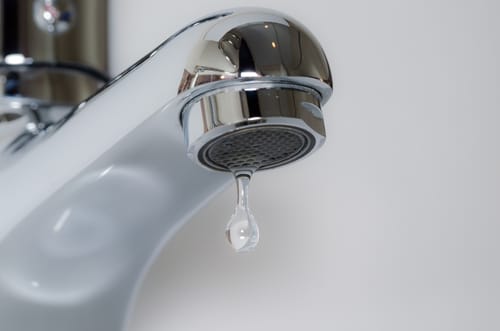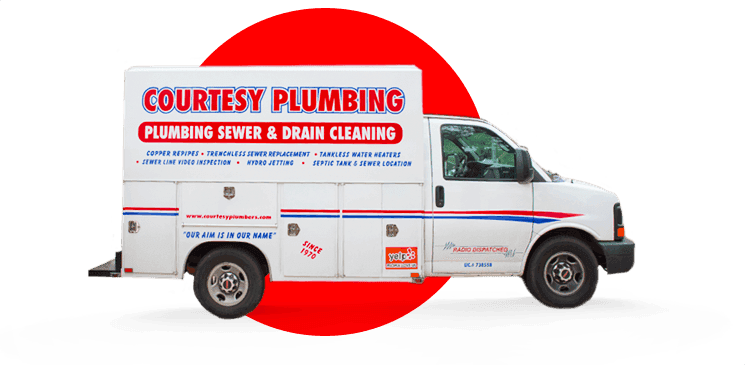Is the constant dripping sound of your faucet keeping you up at night? Courtesy Plumbers is here to help you understand why your faucet is dripping and how to fix it.
Dripping faucets are not just a nuisance; they can also lead to water wastage and increased utility bills. There are several reasons why your faucet may be dripping, ranging from worn-out washers and seals to high water pressure or even faulty plumbing installations.
At Courtesy Plumbers, we understand the importance of a properly functioning faucet. Our team of skilled professionals has years of experience in diagnosing and fixing faucet issues. We use the latest tools and techniques to ensure a long-lasting solution, so you can enjoy a leak-free and peaceful atmosphere in your home.
Don’t let a dripping faucet dampen your spirits. Courtesy Plumbers is here to provide you with expert guidance and assistance. Get in touch with us today and say goodbye to that annoying drip!
Common causes of faucet dripping
Faucet dripping can be caused by various factors. One of the most common causes is a worn-out washer. Over time, the washer inside the faucet handle can become worn, causing water to leak out. Another common cause is a faulty seal. If the seal between the faucet and the sink is damaged, water can escape and drip. High water pressure is also a potential cause of faucet dripping. When the water pressure is too high, it can put strain on the faucet and cause it to leak. Additionally, a faucet that has not been installed properly can also lead to dripping. If the plumbing connections are loose or not sealed correctly, water can seep out and create a drip.
The impact of faucet dripping
While a dripping faucet may seem like a minor annoyance, it can have a significant impact on your daily life. The constant sound of dripping water can be irritating and disturb your sleep, making it difficult to relax or concentrate. Additionally, a dripping faucet can lead to water wastage. According to the Environmental Protection Agency, a single faucet that drips once per second can waste over 3,000 gallons of water in a year. This not only contributes to water scarcity but also increases your utility bills. By addressing a dripping faucet promptly, you can save water and reduce your monthly expenses.
DIY solutions for fixing a dripping faucet
If you’re a handy person and enjoy tackling small home improvement projects, you may be able to fix a dripping faucet on your own. Here are a few DIY solutions you can try:
- Replace the washer: Start by turning off the water supply to the faucet. Remove the handle and locate the washer inside. If the washer is worn or damaged, replace it with a new one. Make sure to choose the correct size and type of washer for your faucet. Reassemble the faucet and turn on the water supply to check if the drip has stopped.
- Tighten loose connections: Sometimes, a loose connection can cause a faucet to drip. Use a wrench to tighten any loose connections, such as the nut that holds the faucet handle in place or the connections under the sink. Be careful not to overtighten, as this can cause damage to the faucet or plumbing.
- Clean the aerator: A clogged aerator can disrupt the water flow and lead to a dripping faucet. Remove the aerator from the faucet and soak it in vinegar overnight to remove any mineral deposits. Rinse the aerator thoroughly and reattach it to the faucet. Test the faucet to see if the drip has been resolved.
While these DIY solutions can be effective for minor faucet dripping issues, it’s important to note that more complex problems may require professional assistance. If you’re unsure or uncomfortable with performing the repairs yourself, it’s best to call a professional plumber.
When to call a professional plumber
While some faucet dripping issues can be resolved with DIY solutions, there are certain situations where it’s best to call a professional plumber. Here are a few instances when professional assistance is recommended:
- Continuous dripping: If your faucet continues to drip even after attempting DIY repairs, it’s time to call in a professional. A persistent drip may indicate a more serious underlying problem that requires expert attention.
- Complex faucet design: Some faucets have intricate designs or unique mechanisms that make them difficult to repair without specialized knowledge. If your faucet falls into this category, it’s best to leave the repair work to a professional plumber.
- Limited time or experience: If you don’t have the time, tools, or experience to tackle faucet repairs, it’s wise to hire a professional. A skilled plumber will have the necessary expertise and equipment to diagnose and fix the problem efficiently.
- Home warranty coverage: If your home is covered by a warranty that includes plumbing repairs, it’s advisable to contact the warranty provider and have a professional plumber handle the issue. This ensures that the repairs are done correctly and within the terms of your warranty.
By calling a professional plumber when needed, you can avoid further damage to your faucet or plumbing system and ensure a long-lasting solution to your dripping faucet problem.
Benefits of fixing a dripping faucet
Fixing a dripping faucet offers several benefits beyond stopping the annoying sound of dripping water. Here are some advantages of addressing a dripping faucet promptly:
- Water conservation: By fixing a dripping faucet, you are actively contributing to water conservation efforts. Every drop counts, and by preventing wastage, you are helping to preserve this precious resource for future generations.
- Lower utility bills: A dripping faucet can significantly increase your water bill over time. By fixing the issue, you can reduce your monthly expenses and save money in the long run.
- Extended lifespan of the faucet: Ignoring a dripping faucet can lead to further damage over time. By fixing the problem promptly, you can extend the lifespan of your faucet and avoid costly repairs or replacements in the future.
- Improved home comfort: A leak-free faucet contributes to a peaceful and comfortable environment in your home. By addressing the dripping issue, you can enjoy a quieter and more relaxing atmosphere.
Taking the time to fix a dripping faucet is a small investment that can yield significant benefits for both your wallet and the environment. Don’t delay in getting your faucet fixed and start enjoying the advantages today!
Preventing future faucet dripping
Prevention is always better than cure, and the same applies to faucet dripping. Here are some preventive measures you can take to avoid future dripping issues:
- Regular maintenance: Schedule regular maintenance checks for your faucets, especially if they are older or prone to dripping. A professional plumber can inspect the faucets, replace any worn-out parts, and address potential issues before they become major problems.
- Monitor water pressure: High water pressure can put strain on your faucets and lead to dripping. Install a pressure regulator or have a professional plumber adjust the water pressure to ensure it is within the recommended range.
- Use quality parts: When replacing washers, seals, or other faucet components, choose high-quality parts. Cheap or low-quality parts are more likely to wear out quickly, leading to dripping issues.
- Avoid overtightening: When reassembling your faucet after a repair or maintenance, be careful not to overtighten any connections. Over-tightening can damage the faucet and cause leaks.
- Address plumbing issues promptly: If you notice any signs of plumbing issues, such as leaking pipes or damp walls, address them promptly. Ignoring plumbing problems can lead to more significant issues, including faucet dripping.
By implementing these preventive measures, you can minimize the chances of experiencing future faucet dripping problems and enjoy a leak-free home for years to come.
Understanding the different types of faucets
Faucets come in various types, and understanding the differences can be helpful in diagnosing and repairing dripping issues. Here are some common types of faucets:
- Compression faucets: These faucets have separate hot and cold water handles and use a compression mechanism to control the flow of water. Dripping in compression faucets is often caused by worn-out washers.
- Ball faucets: Ball faucets have a single handle that controls both the temperature and flow of water. They use a ball-shaped cap and a set of springs and seals to regulate water flow. Dripping in ball faucets is typically caused by worn-out seals or springs.
- Cartridge faucets: Cartridge faucets have a single handle and use a cartridge mechanism to control water flow. Dripping in cartridge faucets is commonly caused by a damaged cartridge or worn-out seals.
- Disc faucets: Disc faucets have a single handle and use a pair of ceramic discs to control water flow. Dripping in disc faucets is often caused by worn-out discs or damaged seals.
By identifying the type of faucet you have, you can better understand its inner workings and troubleshoot any dripping issues effectively.
FAQ about faucet dripping
- Q: How can I tell if my faucet is dripping? A: If you notice a constant drip or a small stream of water coming from your faucet, it is likely dripping. You can also check your water meter for any changes when all water sources in your home are turned off.
- Q: How much water is wasted by a dripping faucet? A: A faucet that drips once per second can waste over 3,000 gallons of water in a year, according to the Environmental Protection Agency.
- Q: Can a dripping faucet cause damage to my plumbing system? A: Yes, a dripping faucet can lead to damage over time. The constant presence of water can cause corrosion, mold growth, and other issues in your plumbing system.
- Q: Can I fix a dripping faucet myself? A: In some cases, you can fix a dripping faucet yourself with basic tools and knowledge. However, more complex issues may require professional assistance.
- Q: How long does it take to fix a dripping faucet? A: The time required to fix a dripping faucet depends on the cause of the issue and the type of faucet. Simple repairs can be completed within an hour, while more complex problems may take longer.
- Q: Can a dripping faucet be a sign of a larger plumbing problem? A: Yes, a dripping faucet can be a symptom of a larger plumbing problem, such as high water pressure or faulty plumbing installations. It’s best to have a professional plumber diagnose the issue to ensure all underlying problems are addressed.
Remember, if you have any specific questions or concerns about your dripping faucet, it’s always best to consult a professional plumber.
Conclusion and final thoughts
A dripping faucet may seem like a minor inconvenience, but it can have significant consequences. It not only wastes water and increases your utility bills but can also disturb your sleep and create an unpleasant atmosphere in your home. By understanding the common causes of faucet dripping and taking appropriate measures to fix and prevent it, you can enjoy a leak-free and peaceful environment.
Whether you choose to tackle the issue yourself or seek professional assistance, addressing a dripping faucet promptly is essential. Courtesy Plumbers is here to provide expert guidance and assistance, ensuring a long-lasting solution to your dripping faucet problem. Don’t let a dripping faucet dampen your spirits any longer. Get in touch with us today and say goodbye to that annoying drip for good!
Remember, a leak-free faucet not only saves water and money but also contributes to a more sustainable future. So take action today and make a positive impact on both your life and the environment.



